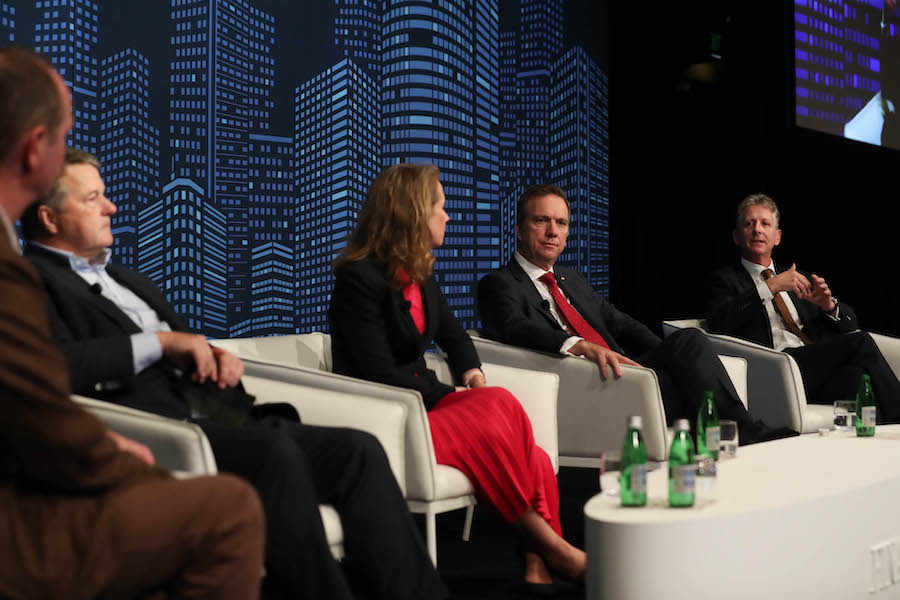The “see you after Australia Day” attitude adopted by some employers isn’t doing office landlords any favours, Dexus boss Darren Steinberg says.
The chief executive of Australia’s largest office landlord said occupancy varied significantly among buildings, as tenants look to Australia Day as a signpost of the 2022 return.
“Some of our business customers, some of them big multinationals, decided ‘we’ll see you after Australia Day’, rather than just getting on and getting business thriving.
“Pleasingly, in the past couple of weeks we’re seeing a lot more activity around the city, particularly here in Sydney and in Melbourne. Brisbane and Perth are [closer] to normal.
“It’s quite building specific, funnily enough you’ve got buildings like [the 55,000sq m] Australia Square and [the 41,818 sq m] Governor Phillip Tower where they’re back to circa 80 per cent occupancy.
“But other buildings are 10 to 20 per cent, if you’re lucky, and as a result all businesses that live off the populations in the city are struggling to come back to normal.”

Steinberg appeared alongside Charter Hall CEO David Harrison, Brookfield managing partner Sophie Fallman and JLL boss Stephen Conry at the Australian Financial Review Property Summit on Wednesday.
In a later session, Charter Hall office chief executive Carmel Hourigan noted an encouraging increase in the number of tenant briefs from the private sector in the leasing market.
“An interesting trend we’ve seen in the last few months is in the private sector. There hadn’t been a lot of large briefs in the market.
“In the last three weeks, we’ve seen the number of briefs in the market go from around 26 to 40, about 130,000sq m [in requirements].”
While the office market is tipped to make a strong recovery in 2022, robust net additions to the Sydney and Melbourne CBD office markets will continue to present headwinds.
Office supply is running well above the long-run averages in Sydney and Melbourne, according to Oxford Economics analyst Thomas Creevey.
“Net additions will have contributed 5 percentage points in Sydney and almost 9 percentage points in Melbourne to rising vacancy rates by the end of this wave of supply,” Creevey said.
Hourigan said a recovering labour force had helped underpin bigger tenant requirements in the leasing market.
“I think people have been surprised about how much they’ve grown in terms of employment. Recruiters must be making an absolute fortune at the moment.”